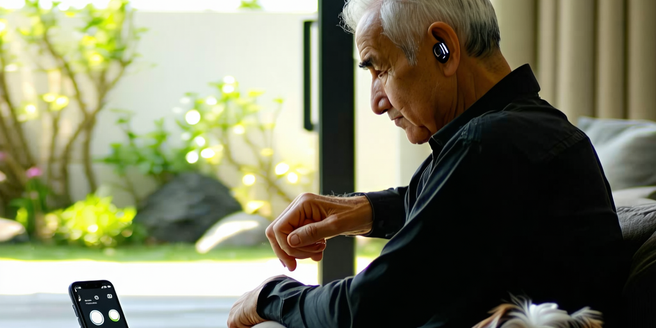Smart Hearing Aids And Sound Technology

Introduction to Smart Hearing Aids
Smart hearing aids represent a significant leap forward in auditory technology, blending traditional amplification with modern digital features. These devices adjust sound levels automatically and filter background noise for clearer hearing. They connect to smartphones, enabling users to control settings via apps, stream music or calls, and receive real-time customization based on different environments. Smart hearing aids are transforming lives by offering more than just sound amplification. Their advanced features cater to individual hearing needs, making them an essential tool for improving daily communication and overall quality of life. As technology advances, smart hearing aids continue to evolve, integrating more sophisticated algorithms and sensors to further enhance user experience.
How Sound Technology Enhances Hearing
Modern sound technology has significantly enhanced hearing aid performance. By utilizing digital signal processing, these aids provide clear and distinct audio experiences. Background noise reduction is a key feature, allowing users to focus better in noisy environments like restaurants or public places. Directional microphones in these devices selectively amplify sounds from specific directions, providing users with an edge in conversation comprehension. Frequency manipulation ensures sounds are heard within a comfortable hearing range, catering to various hearing loss levels. With these advancements, individuals can experience not just louder, but clearer and more natural sound, making daily interactions more pleasant and stress-free.
Features to Look for in Modern Devices
When selecting modern hearing aids, several key features are pivotal. Advanced connectivity options, such as Bluetooth, allow seamless integration with smartphones for direct audio streaming and control via dedicated apps. These technologies are continually evolving to offer users a more intuitive experience. Noise reduction technology helps in filtering out background noise, ensuring clearer conversations in crowded spaces. Rechargeable batteries are another vital feature, offering convenience and reducing the need for constant battery replacements. Directional microphones and adaptive sound processing adjust to the user’s environment, providing a tailored listening experience. Tailor these features to your specific lifestyle and auditory needs for optimal benefit.
Comparing Traditional and Smart Aids
Traditional hearing aids primarily amplify sound, lacking the sophisticated features of smart aids. Smart hearing aids leverage digital technology to provide superior sound quality and user experience. They automatically adjust to different environments, ensuring users experience the best sound settings in any scenario. Moreover, smart aids can often be updated with new features and improvements via software updates. Connectivity with phones and other devices allows for direct streaming of calls and media. Whereas traditional aids may require manual adjustments, smart aids offer convenience through app control. Additionally, real-time data collection and artificial intelligence in smart aids offer a more personalized experience compared to their traditional counterparts.
The Role of AI in Sound Processing
Artificial Intelligence (AI) plays an integral role in modern hearing aids by enhancing sound processing capabilities. AI algorithms analyze auditory environments in real-time, allowing the device to adjust settings automatically for an optimal hearing experience. This includes differentiating between speech and background noise, focusing on important auditory cues, and adapting sound levels accordingly. With AI, hearing aids can learn user preferences over time, providing a tailored experience that evolves with the user’s needs. This dynamic processing power ensures that users receive the most natural and clear sound possible, significantly improving their quality of life.
Future Trends in Hearing Aid Technology
The landscape of hearing aid technology is rapidly advancing. Future trends include comprehensive integration of AI to provide even more personalized and adaptive hearing solutions. We expect to see increased connectivity, with hearing aids functioning seamlessly with smart home devices, creating an interconnected ecosystem. Miniaturization will make devices more discreet yet powerful, enhancing user comfort. Enhanced battery life and wireless charging will push the boundaries of convenience. Moreover, biometric sensors could offer health monitoring features. As technology progresses, hearing aids will continue to deliver unprecedented levels of sound clarity and personalization, revolutionizing auditory healthcare.